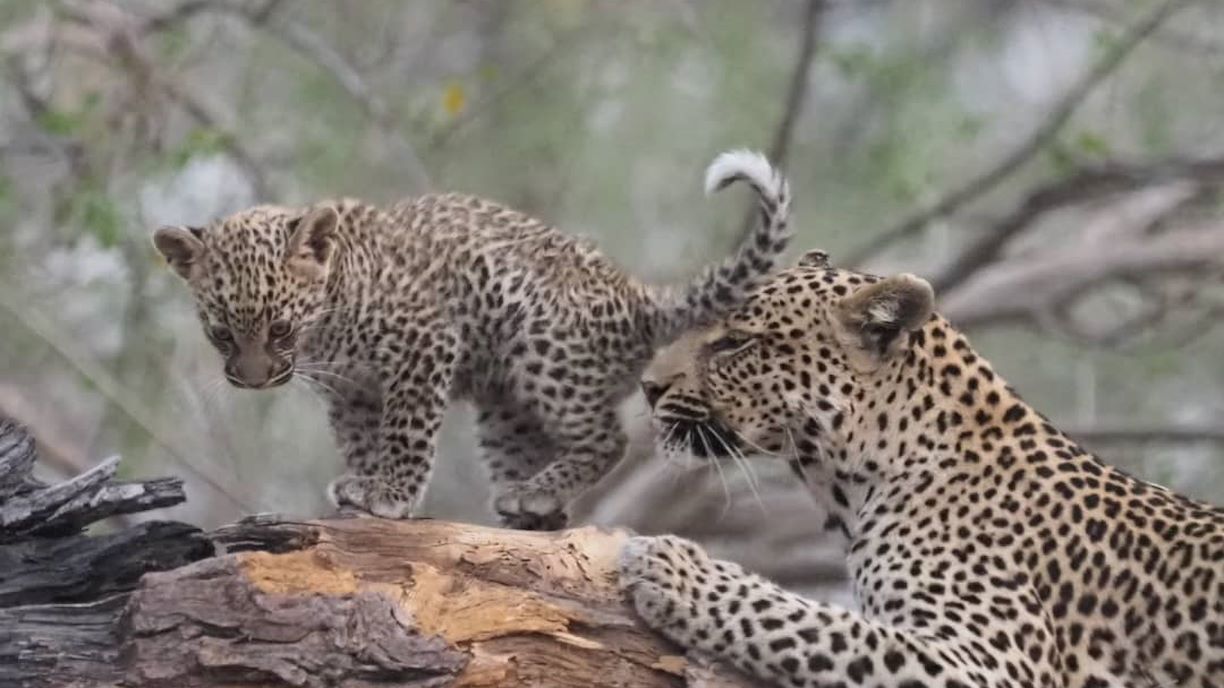This is the time of the year when leopards greatly appreciate the sausage trees, as they bloom and their flowers fall to the ground attracting species such as impalas to feed on them. This provides a unique opportunity for our guests and guides to capture stunning images of leopards as they free fall onto an impala that was completely unaware of their presence. Hunting from the tree tops has been a regular advantage for these leopards, which are mostly successful. We were also treated to two sightings of mating pairs of leopards last month.
The water supply near our two camps has been steadily shrinking over the last two months, with parts of the channel completely dry now. The limited water resources here have created scenes like no other, with guests capturing magical wildlife moments. Less water has also created more competition among the herbivores, making them vulnerable at the last remaining water sources. They actually act as death traps, as this is where predators take full advantage of the hunting opportunities. Again, our guests took the opportunity to concentrate on these areas and had astonishing experiences with predator/prey interactions. We watched lions killing an impala at Lediba Bridge, lions killing a reed buck in front of Lediba camp, lions hunting buffalos, cheetah killing impala, and most rare, lions were heard killing a two-year-old elephant at night in front of Lediba camp. We watched them feeding in the morning.
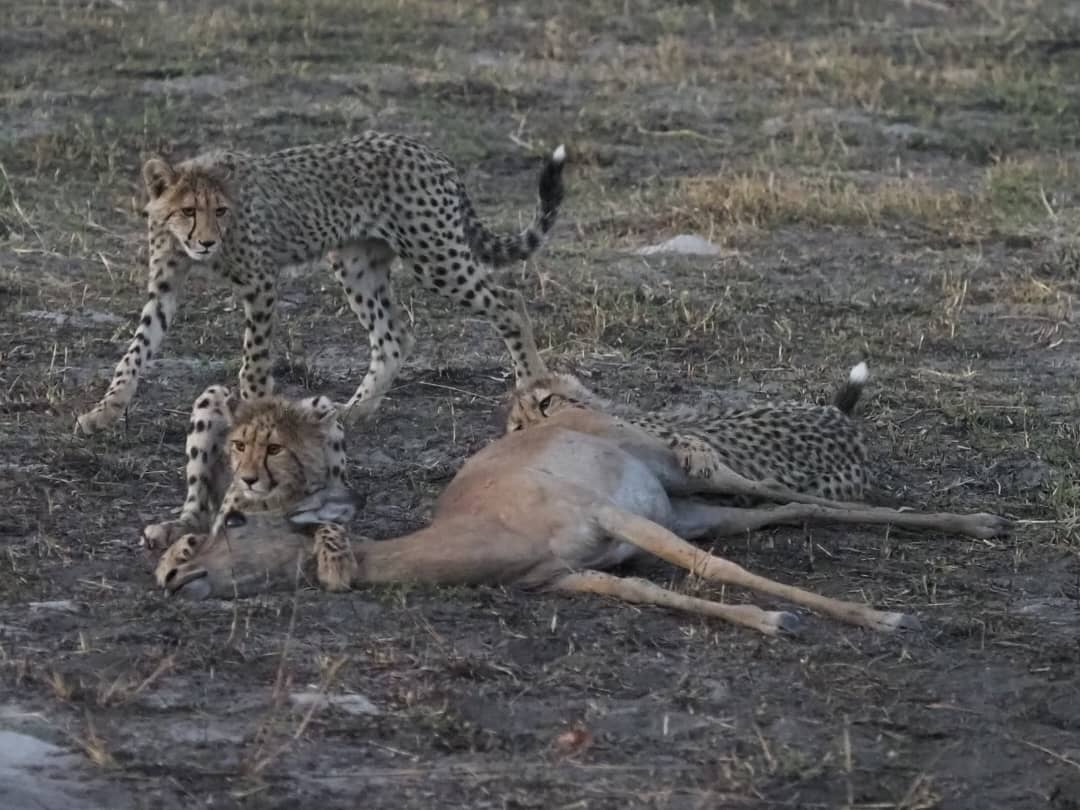
In the past two months, we have had unbelievable and amusing interactions of lionesses with young elephants. We watched them pouncing on young elephant calves three times in one month; however, they weren’t successful as the big cows immediately and fearlessly defended their calves. This behaviour of hunting young elephants seems to be growing rapidly in this pride. Elephants have been roaming this area in front of camp in large numbers, creating noisy commotions when they meet up with the lions along the drying and muddy channel. From the rooms, guests watched the elephants quench their thirst, cool down by splashing water and mud all over their bodies, and young calves roll in the mud, driven by their high energy.
This pride (the Tsame Pride of 22) spent the majority of September and October near the camps, operating along the last remaining water, waiting in ambush for animals coming to drink. This is where we also spent two months watching the lioness with her four cubs – where one of the most amusing sightings for our guests are the well-fed and very energetic cubs, seemingly obsessed with chasing their mum’s tail, and playing with sticks and elephants dung.
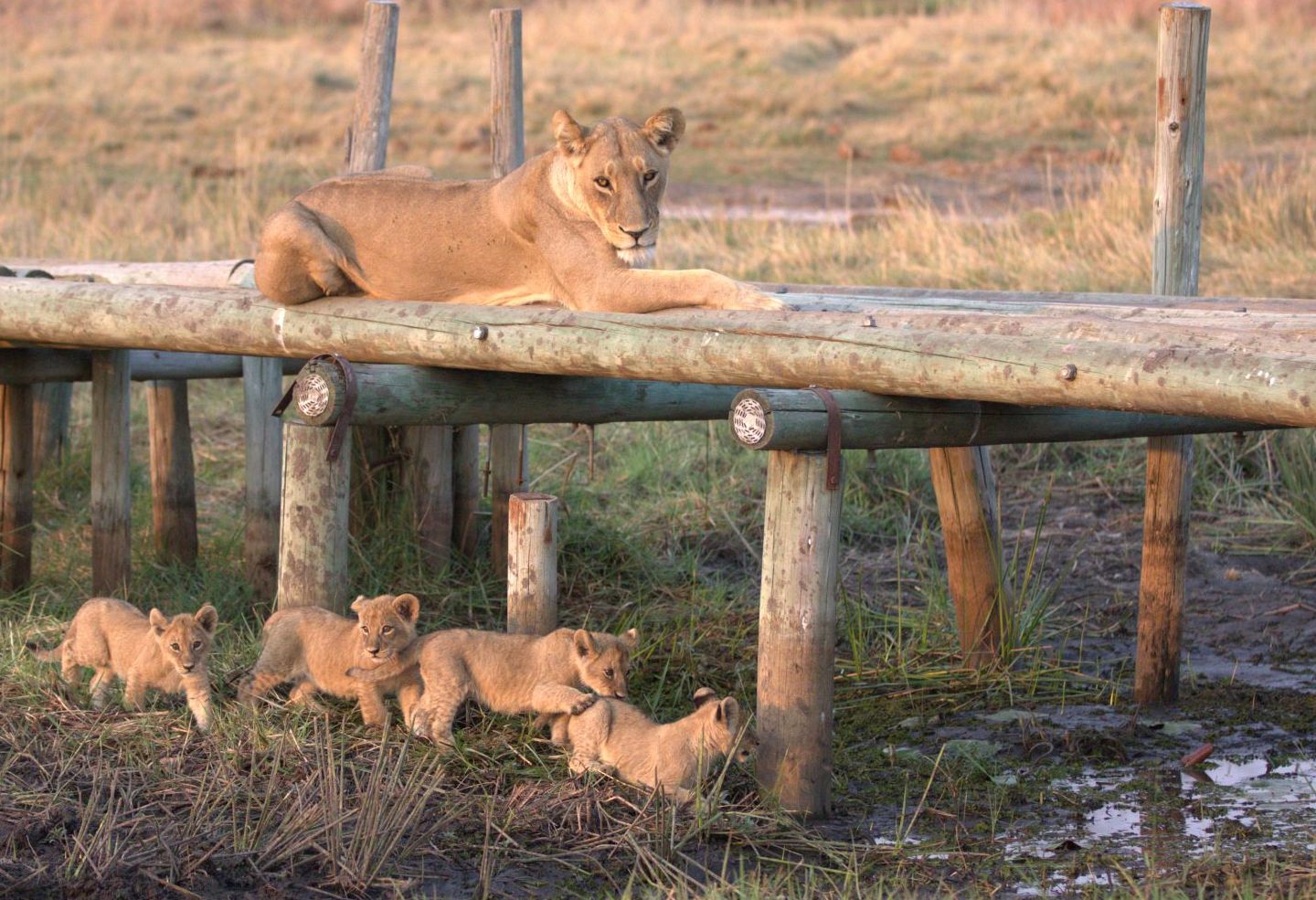
Drives along the Gomoti River provided many spectacular hours with hundreds of elephants, zebras and other antelopes coming up for a drink throughout the day, creating the most amazing sightings along the river. This has also attracted some predators to hang around along the river – a cheetah with her five cubs, a pride of five male lions and several other lionesses have all actively made the area their hunting ground for the past two months. With the abundance of wildlife here, they were successful most of the time. Here on the Gomoti River, observing animals’ behaviour has been challenging and rewarding, as they congregated in large numbers. The interactions between the many highly social species, grooming sessions, and predator-prey interactions, led to amazing photographic opportunities for our guides and guests.
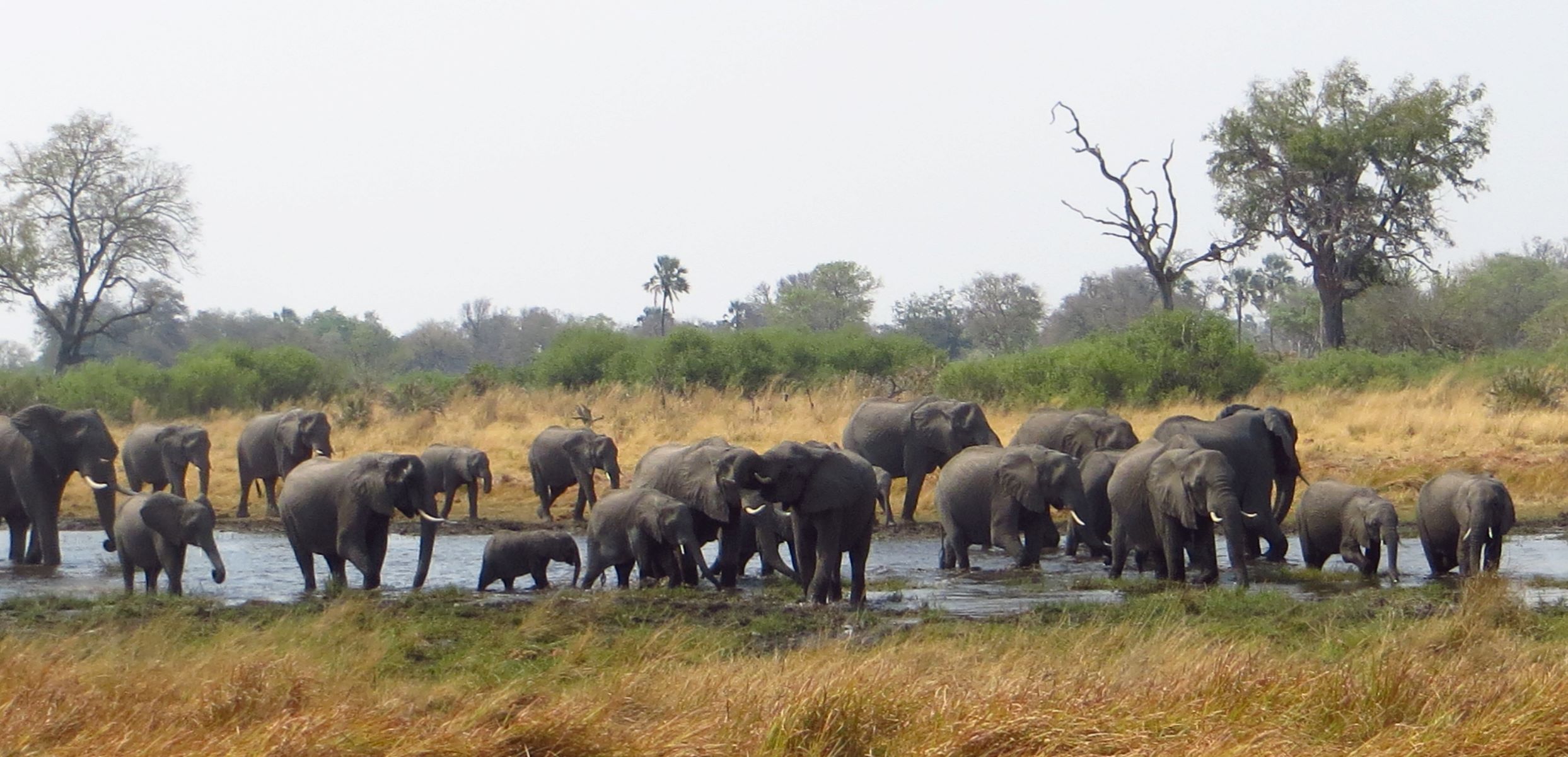
The two different mother cheetahs with their five offspring each (12 cheetahs in total) have been seen in the area regularly in the past three months, with sightings of them recorded almost daily in the last two month. These mother cheetahs are very successful hunters, keeping their offspring well fed and growing fast.
What amazes us is to see how they continue to successfully and safely raise their cubs in an area with many lions and hyenas. Quite a few times, they lost their meals to hyenas, which have developed the attitude to secretly follow these cheetahs as they hunt, and surprise them once they kill their prey. Cheetahs will always give up their hard-earned prey to any other larger predator that they know is a threat to themselves and their cubs. These mothers cannot afford to be injured while fighting for a meal with a powerful predator.
As we watched them hunting on many days, another common disturbance they had was from troops of baboons. It is not easy for them to hunt impalas that are grazing within a large troop of baboons. Male baboons have no fear of these smaller predators.
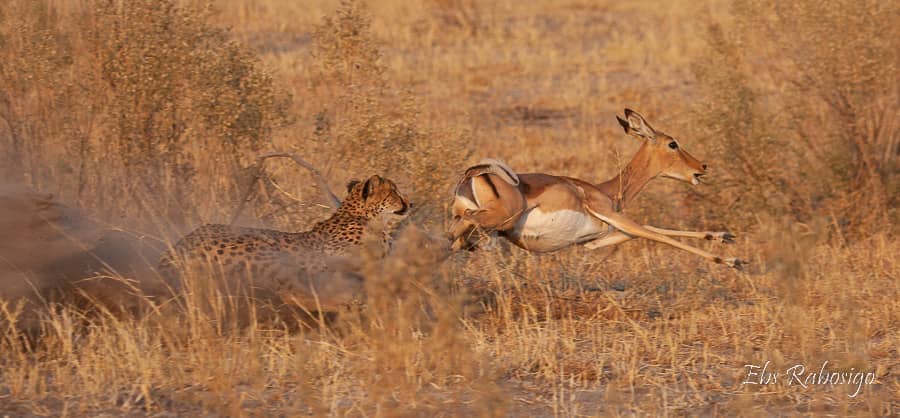
On one occasion we watched the cheetah mother take down an impala. Suddenly two large male baboons mocked her while she was preoccupied with suffocating the impala. She gave up her prey, and they chased her for a very long distance. Meanwhile, we watched the impala regain some air after approximately three minutes, when even we had concluded that she was dead. She woke looking dizzy and confused, as life slowly inched back into her. She finally stood up and ran away, living to tell her terrifying story.
Lions lying in the shade some distance away heard the baboons’ commotion, and watched them chasing the cheetah. They quickly came to inspect what the commotion was all about while we feared for the five cheetah cubs. The cheetah mother ran towards a completely opposite area from the cubs to divert the lions attention away from the cub’s side. The cubs did very well and stay concealed when they saw lions passing by, one can tell that they have been through the same experience before because of the way they behaved when seeing lions. They became very patient not to take off at the wrong and dangerous time towards their mother, while keeping an eye on lions, the cubs eventually took a long loop to get to their mother safely when all the lions concentrated on another direction.
Supermom, a female cheetah with her five bigger offspring now estimated to be 15 months old, changed her hunting ground from the areas closer to camp, operating more in the north along the Gomoti River to target impalas drawn to the river for water. She would surprise them as they come out of the woodland, unaware of what’s in the opening on the other side of the woods. Prey species are regularly caught here, being cornered and chased back in the open area where a cheetah has the advantage to perform hater top speed without vegetation obstruction. In this area she was 90% successful on her hunts.
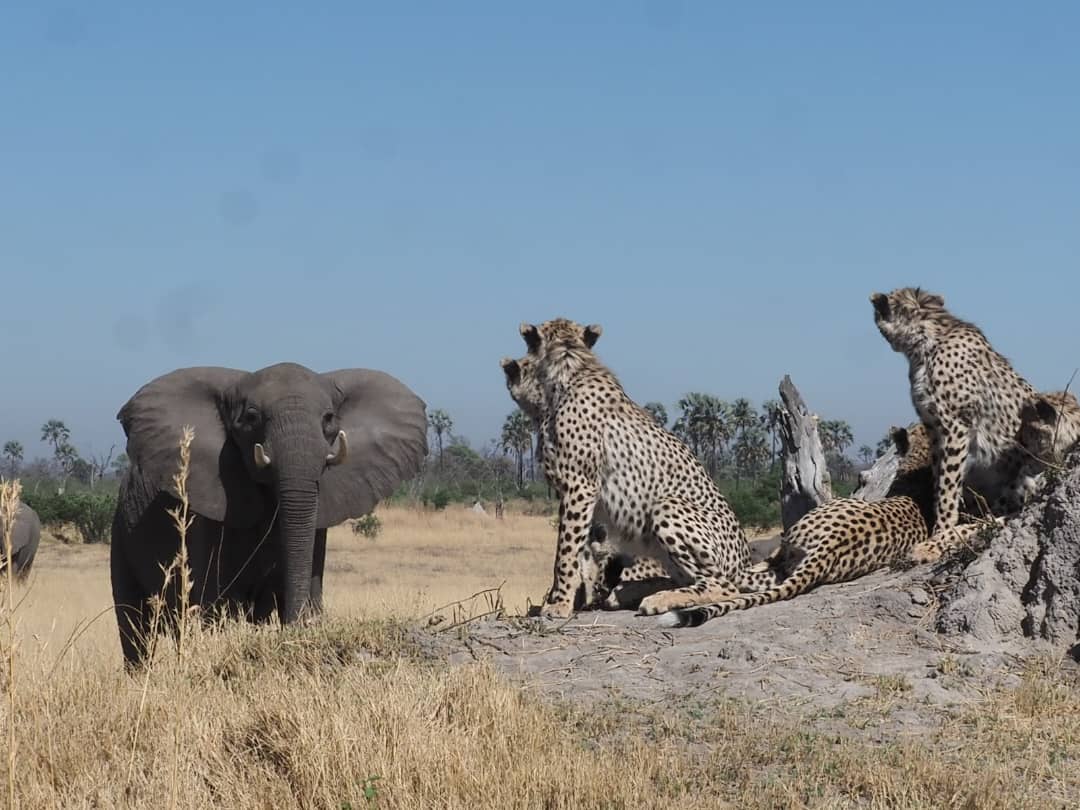
Amazing Mom, as our guides named her recently, is another female cheetah with five younger cubs estimated to be at least 9 months old. She also moved out to the west of the camps in an area that was burnt by wildfires three months ago. This area become fruitful for her on a daily basis as she consistently killed impalas attracted by the new, short green grass shoots that are highly nutritious for these grazers. She has been successfully operating on this area for a month now.
There is also a brother and sister cheetah in the Gomoti area who recently parted ways with their mother to become independent. Now, all the cat-and-mouse, and predator-prey games they engaged in when still with their mother are finally being put to use. We watched them feeding on impalas they killed few times in that area. They operate in the same area as Supermom, and are aware of each other’s presence and very respectful of each other’s space. They are still youngsters at almost same age as Supermom’s offspring, which makes them no threat at all. With all these cheetahs in the area, this regularly pushed our recorded cheetah numbers to 14 on some days.
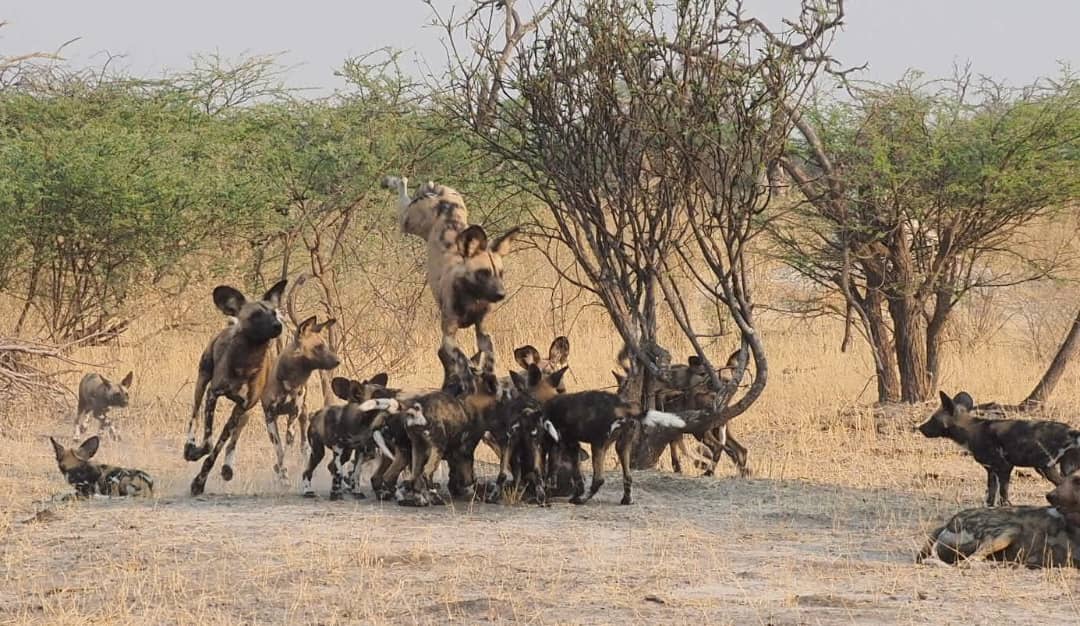
Our guests also had the privilege to follow our pack of 18 wild dogs with their 14 puppies from two different litters. They have done well to raise all 14 beyond their most vulnerable stage. For the past two months the puppies have been full-time active, running around with the pack wherever they go, and no longer den-bound. It has been interesting to watch how they interact with other animals as they learn the day-to-day struggle for survival in the African bush. Some encounters they came across were been their first experiences in their life, and were dealt with extremely well and thankfully without coming to any harm. They collided with lions unexpectedly on few occasions, and we watched them as they successfully mocked two lionesses that stole their food. Although they couldn’t defeat the lionesses, they did show their bravery in dealing with such encounters, which is a great and valuable lesson for the puppies to learn quickly.
We still have a very active hyena den in the area. If not on a tight schedule, our guests very often take an easy afternoon drive to watch the interaction at these highly social animals’ den. Here we find cubs of various ages, in a very strict ranking order.
